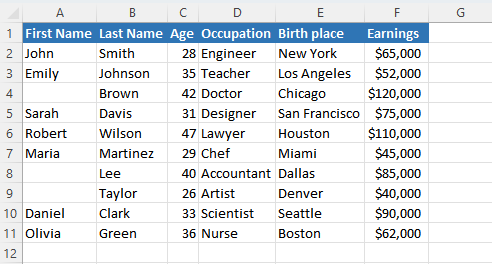When working with large datasets in Excel, it is often necessary to filter out blank cells to streamline the analysis process. Excel VBA (Visual Basic for Applications) can automate this task, saving time and improving accuracy. In this tutorial, we’ll walk through the steps of filtering blank cells using VBA code.
Example

Steps
To filter blank cells in Excel using VBA, you’ll need to write a macro that applies a filter to a range of cells based on specific criteria—in this case, the absence of data.
- Open the Excel Workbook where you need to filter the blank cells.
- Press Alt + F11 to open the VBA Editor.
- Insert a new module by right-clicking on any existing module or on the VBAProject name, then select Insert > Module.
- In the module, paste the following VBA code that will filter out blank cells from a specified column:
|
1 2 3 4 5 6 7 8 9 10 |
Sub FilterBlanks() Dim ws As Worksheet Set ws = ThisWorkbook.Sheets("Sheet1") ' Update the sheet name as necessary With ws .AutoFilterMode = False ' Turn off any existing auto-filters .Range("A1").AutoFilter ' Replace "A1" with the cell where your data starts .Range("A1").AutoFilter Field:=1, Criteria1:="" ' Replace "1" with the column number you wish to filter End With End Sub |
- Modify the sheet name and range according to your data. The field number corresponds to the column you wish to filter, where
1represents Column A. Close the VBA Editor and return to your Excel workbook.
Run the macro either by pressing F5 in the VBA Editor while the
FilterBlankssub is selected, or assign the macro to a button for easy access from the workbook.After running the macro, your data will be filtered, displaying only the rows that have data in the specified column.
Remember to replace "Sheet1" and "A1" with your actual sheet name and the range where your data starts, respectively. The Field:=1 should be changed to match the column index you want to filter (1 for Column A, 2 for Column B, and so on).
Result

Conclusion
Through the use of Excel VBA, filtering blank cells becomes a quick and painless process, allowing you to concentrate on analyzing the data that matters. By adapting the provided code to your own needs, you can easily integrate this functionality into your Excel workflows.
